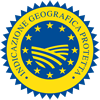Description
The Miel de Galicia PGI is produced in hives and is obtained by means of decanting or centrifuging processes. In general, the pollen spectrum considered as a whole must be typical of the Galician honeys. Moreover, depending on the floral origin of the various types of honey listed, pollen spectrums must fulfil the following requirements. For multiflower honey the majority of pollen must belong to: Castanea sativa, Eucalyptus sp., Ericaceae, Rubus sp., Rosaceae, Cytisus sp-Ulex sp., Trifolium sp., Lotus sp., Campanula, Centaurea, Quercus sp., Echium sp., Taraxacum sp. and Brassica sp. For eucalyptus honey the minimum percentage of pollen from eucalyptus must be 70 %. For chestnut honey the minimum percentage of pollen from chestnut must be 70 %. For blackberry honey the minimum percentage of pollen from blackberry must be 45 %. For heather honey the minimum percentage of pollen from heather must be 45 %.
Production Area
The production, processing and packaging area of the Miel de Galicia PGI covers the whole of the Autonomous Community of Galicia.
Production Method
The production phases for honey made in casement frame hives are the following: separation of bees from honeycomb; honey extraction through decanting or centrifugation and drying by means of dehumidifier or ventilation to achieve 60% relative humidity. Then the honey extracted is filtered twice and decanted, depurated and, finally, stored and conditioned.
Appearance and Flavour
Colour and flavour of Miel de Galicia PGI change depending on the different types: honey from eucalyptus is ambercoloured with a floral aroma and a hint of waxiness; it has a slightly acidic flavour. Heather honey is deep amber with reddish tones, it crystallises easily, has an intense floral aroma and a bitter taste. Chestnut honey is deep amber in colour, its aroma reminds us of wood and its taste is intense and savoury. Honey from Blackberry is the most aromatic of all. It is deep amber in colour, its taste is pleasant and fruity and its aroma is intensely floral. We also have a wide range of multi-flower honeys with varied and nuanced sensorial characteristics according to the main kind of flower.
History
The origins of Miel de Galicia PGI go back many centuries. As at the end of 1700, the traditional hives registered in Galicia were 366.339, also known as trobos or cortizos, which are still found in a number of places. This fact clearly illustrates the importance of bee-keeping in Galicia going back to antiquity, and is reflected in Galician place names. The development of modern apiculture started eventually in 1975 with the addition of substantial innovations like the transfer of bee colonies from fixed hives to mobile ones.
Gastronomy
Miel de Galicia PGI should be stored in a fresh, dry and dark place. Due to its composition it is prone to solidifying and becoming hard; this is a natural process for Galician honey (because it is not pasteurised) and does not affect its quality. Honey is a complete food, containing properties that are highly beneficial for the health and it provides essential nutrients for the organism.
Marketing
The product is sold as Miel de Galicia PGI. The volume of the containers used for honey for direct consumption tends to vary between 500 and 1.000 gr. Any product that meets all the conditions of their rules is sold with a back label guaranteeing its quality and origin. The packaged honey may be either liquid or solid (crystallised or creamy) and preserves all its natural properties.
Distinctive Features
The majority of Galicia is, with respect to geomorphology, lithology and soil conditions, different to other traditional bee-keeping regions in the Mediterranean. The geographical location of Galicia and its specific characteristics result in honeys with their own characteristics which are thus distinguished from those produced in other regions, as it gives to Miel de Galicia PGI the quality which distinguishes it.






